A caisson foundation is watertight structure that can be spherical, rectangular, etc.
It is often used in the construction of bridge piers and other structures that require foundation under rivers as well as other bodies of water.
Here we will learn in detail about the caisson foundation, types of caisson foundation, and how caisson foundation is constructed.
What is Caisson Foundation?
Caisson foundations are also known as pier foundations are prefabricated hollow structures that are constructed on or near the ground surface, dipped to the desired depth, and then filled with concrete to become a permanent structure; Caisson (sometimes called “piers”) are made by auguring a deep hole in the ground.
The term cassion is derived from French word caisse meaning box.
It is a box-like structure, round or rectangular which sunk on the surface of both land and water at some desired depth.
It satisfy the purpose of placing the foundation in correct position under water.
When Caisson is required:
- Soil contains massive boulders that obstruct the penetration of the piles.
- A huge substructure is required underneath the rear bed to offer resistance to the forces that might be dangerous due to floating objects, notch, etc.
- The foundation is subjected to a vast lateral load.
- The depth of water level in rivers and seas is high.
- There are river forces involved in load compositions.
- The groundwater levels are aggressive.
Types of Caisson Foundation:

1. Open Caisson Foundation:
Open caisson is open at the top and bottom, they are hollow chambers and cutting edge at the bottom of the caisson.
The shafts sink into place by removing soil from inside the shaft (chamber) until the bearing reaches the stratum.
Typically, an open caisson penetrate it through a dry or wet construction area or an artificial island.
A synthetic island of sand forms to elevate the ground surface above the water level.
Thus a dry area is obtained to submerge the caisson; the dimensions of the sand island should be sufficient to provide a working space around the caisson.
In this case, it is not possible to immerse the caisson in the dry areas, built-in spillage or barge then transported to its final location by floating.
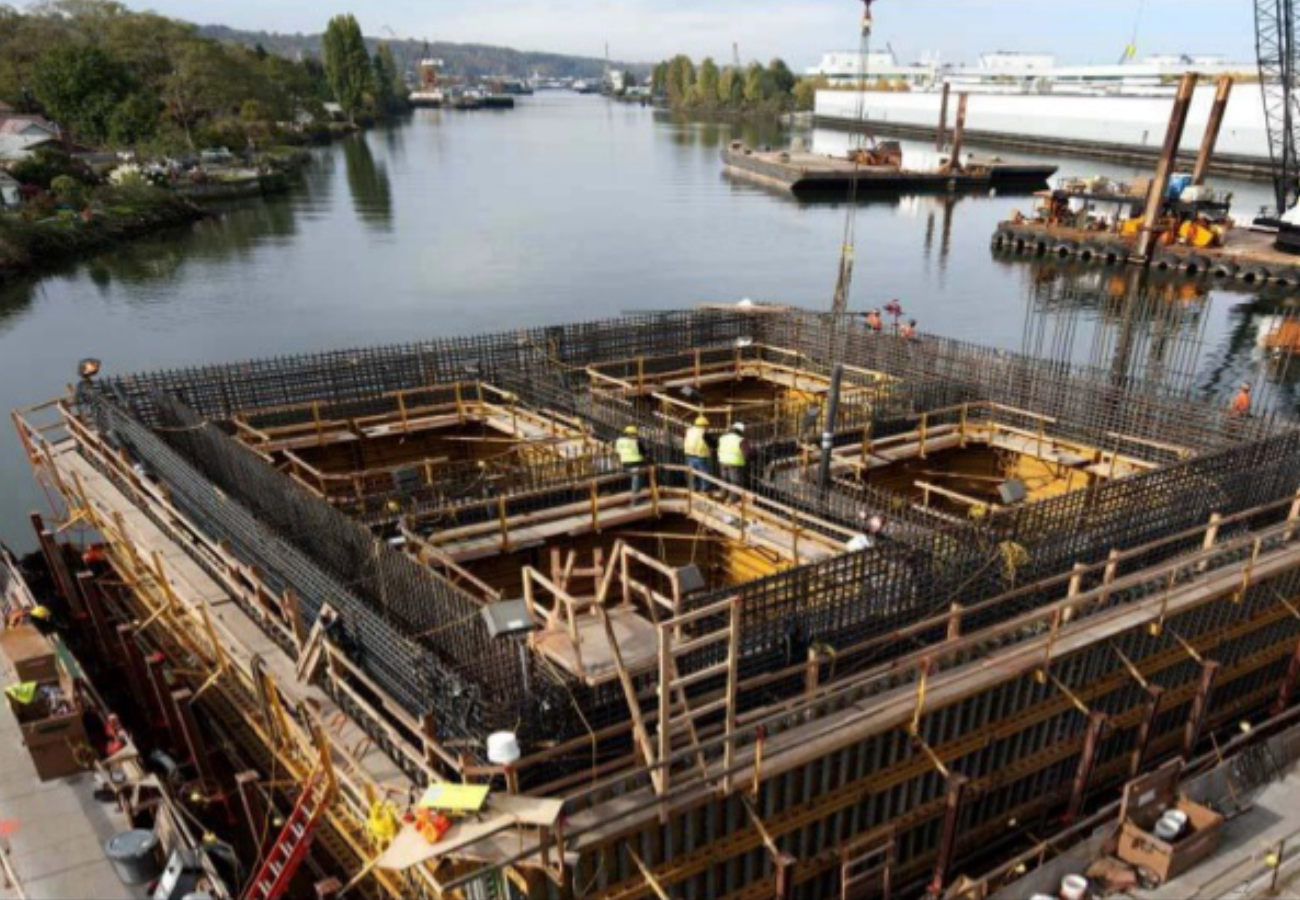
Guide piles generally involve dipping the first few lifts of the caisson, the submerge ends through open water then penetrates the soil.
An open caisson usually made from wood, metal, reinforced concrete, is also called “well foundation”.
2. Pneumatic Caisson Foundation:
Pneumatic caisson is required when the soil surrounded cannot be excavated satisfactorily.
It also works when there is a possibility of a steady flow of water or difficult obstructions occurring during submergence.
Pneumatic caissons are open at the bottom & closed at the top.
At the bottom of the pneumatic caisson is a working chamber that maintains compressed air for the stress required to prevent the entry of water and dust into the chamber.
The manufacturing procedure of pneumatic caisson is similar to that of the open caissons, also the working chamber remains airtight.
The ultimate load-carrying capability and slicing-edge are also like open caisson foundation.
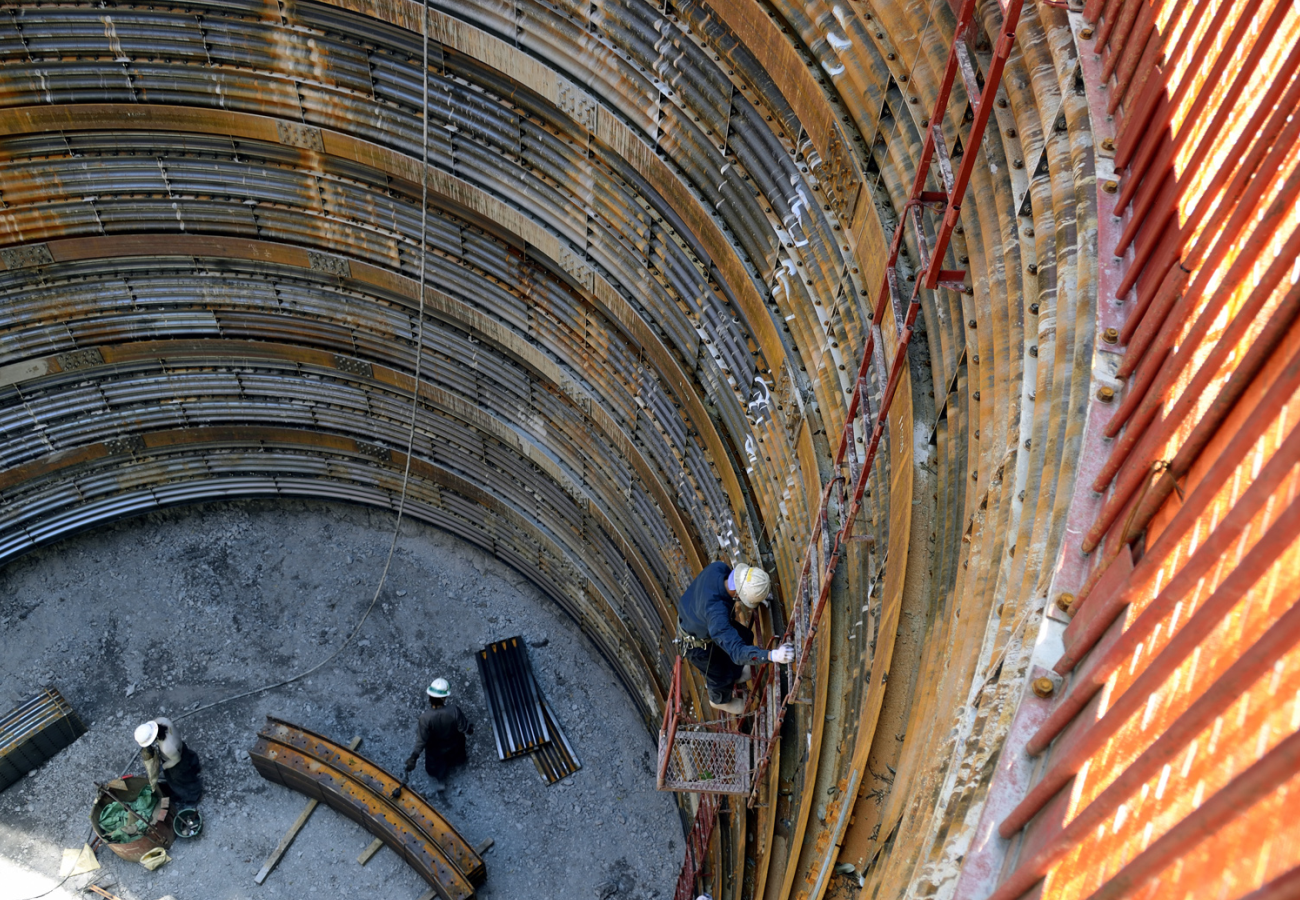
3. Floating Caisson Foundation:
Floating caissons are boxes with large holes open at the top and closed at the bottom.
This caisson floats at the place where it is kept, fill the site with sand, ballast, dry concrete and gravel.
A floating caisson does not penetrate in the soil like the open and pneumatic caisson & remains on the flat bearing surface.
The load-carrying capacity is exposed as resultant aspect friction at the bottom resistance.
The caisson sinks to its final position, filled with the sand or gravel.
A solid cap is formed on top to bear the structural load, to prevent rip-off below, a rip-tear is pouring across the base.
Generally, these caissons are of R.C.C or metal, the formation of the caisson within the plan may be round, square, rectangular or elliptical.
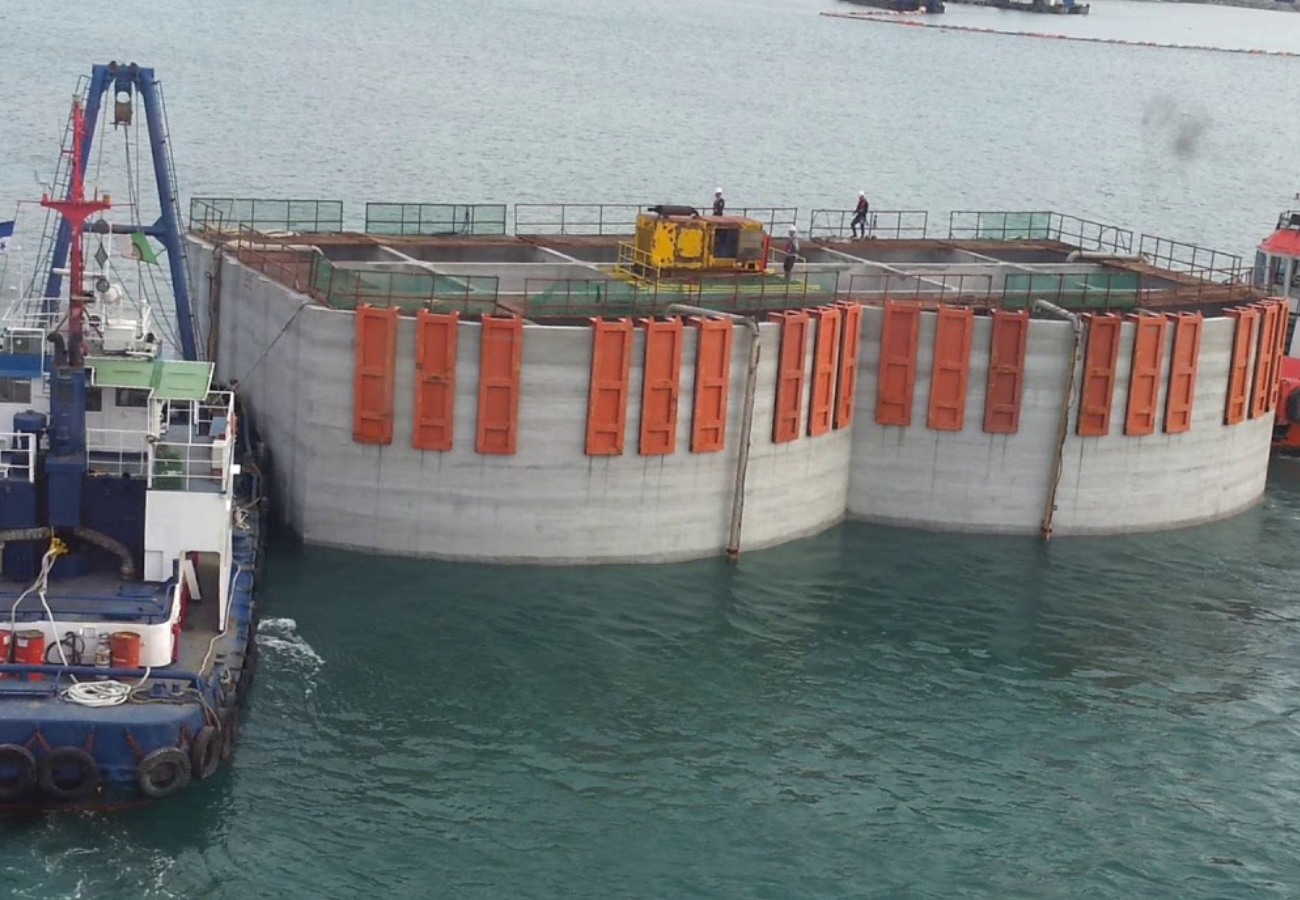
It usually consists of several cells formed by diaphragm division.
A caisson is designed as a vessel, it must sink in steady water and supply suitable internal strut.
5. Box Caisson Foundation:
Box caisson include containers on 4 sides, bottom and top of these boxes are open & the concrete ground is built at the bottom.
The finished box caissons are placed in the original location, then the pre-prepared boards are positioned.
Once a suitable location decided, the entire void is filled with concrete, box caissons are cost-effective when it is not possible to assemble on site.
This type of caisson is required, when the economic system is required.
The excavated caissons are simple because the caissons are placed within an excavation site.
It is normally cylindrical then filled with concrete.
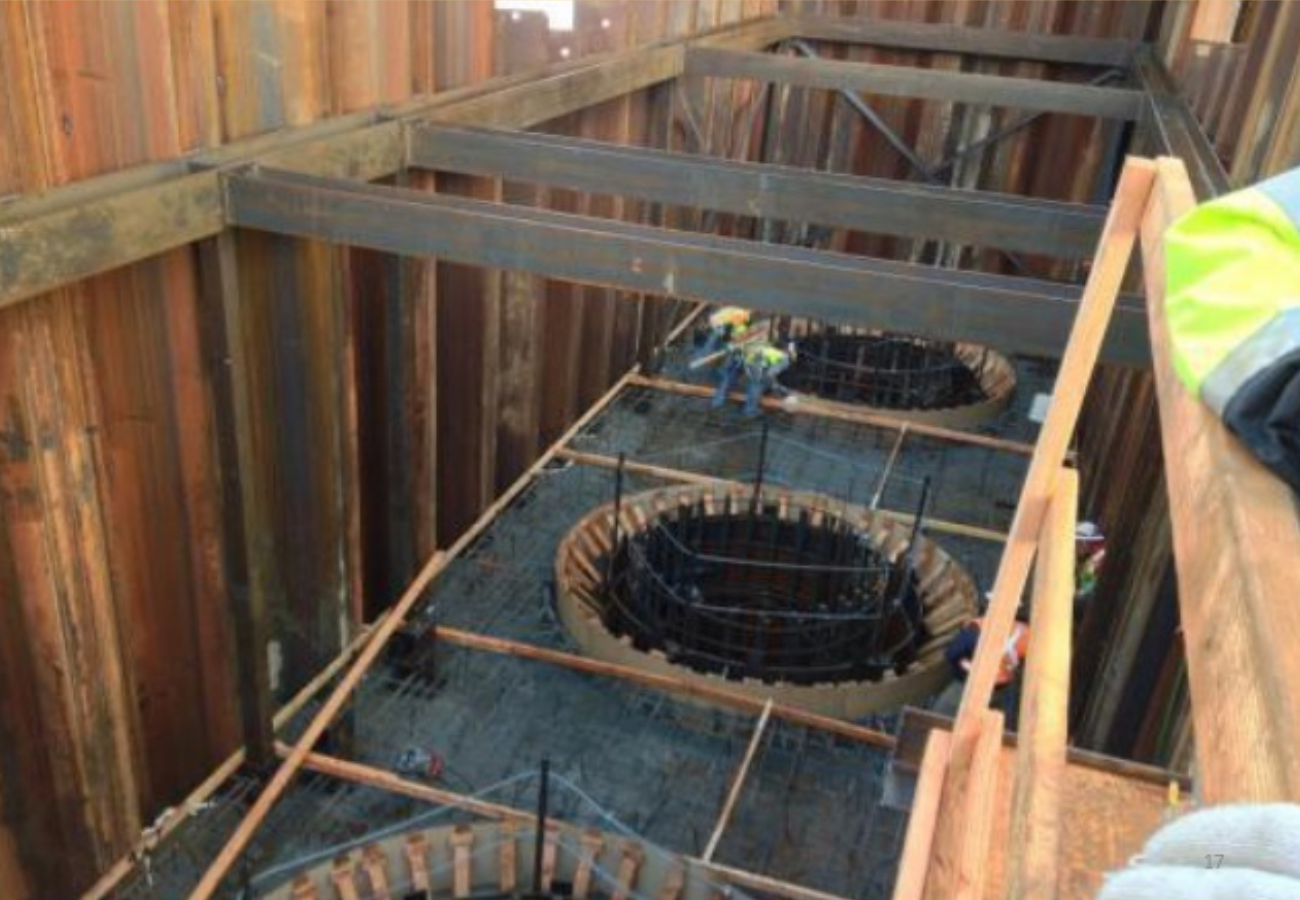
6. Excavated Caisson Foundation:
This caisson is placed within the excavated space, usually cylindrical and then filled with concrete.
Construction Process for Caisson Foundation:
The following steps can be adopted to construct the caisson foundation as follows:
- We should first determine the place for the establishment of the caisson, it is 3.7 meters pre-cast.
- With the help of the towboat, the caisson is taken to the construction site and anchorage cables tied to the caisson.
- Concrete is used to make the slips and the area becomes heavy and submerged in water.
- Anchorage cables are used to hold caissons in place.
- When the caisson touches the bottom of the river, the anchorage cables are removed.
- Finally, the cap is inserted.
Also read: Grillage Foundation & Deep Foundation
Pile Vs Caisson Vs Pier:
| Pile Foundation | Caisson Foundation | Pier Foundation |
| A pile foundation is a long cylinder strong material such as concrete. | Caisson is water level structures made of wood, steel or reinforced concrete. | A pier foundation is a collection of large-diameter cylindrical columns to support the superstructure |
| The loads are transferred by means of vertical timber, concrete or steel. | It built above the ground level and then sink into the ground. | It transfer load through bearing only. |
| Pile foundation is required to resist bigger loads i.e. bridge or flyover. | Caisson is required when a big lateral load. | Pier foundations are required to resist the small load. |
| Pile has a footing. | Caisson doesn’t have a footing. | Pier has a footing. |
Also read: Difference between Footing and Foundation
Advantages of Caisson Foundation:
- Caisson is more economical.
- The pile reduces the need for the cap.
- It makes less noise and vibration during construction.
- They can be easily transferred to different site conditions.
- It has High axial and lateral loading capacity.
Also, read: Floating Foundation & Mat Foundation
Disadvantages of Caisson Foundation:
- It is highly sensitive to manufacturing processes.
- They are not good at polluted places.
- Lack of building experience.
- Lack of skilled labourers.
Also read: Pier and Beam Foundation & Types of Foundation
Frequently Asked Questions:
Caisson Foundations are prefabricated hollow substructures that are built on or near the ground’s surface, sunk to the desired depth, and then filled with concrete.
The Caisson foundation is used as a bridge pier for concrete dam construction and ship repair.
The four main types of caissons are box caisson, open caisson, pneumatic caisson and monolithic caisson.
Conclusion:
Caisson foundation provides an alternative means to achieve satisfactory installation at intermediate depths to critical depths in both ground and water surroundings.
During decompression, if the sufferers suffer badly, this effect is called caisson disease.

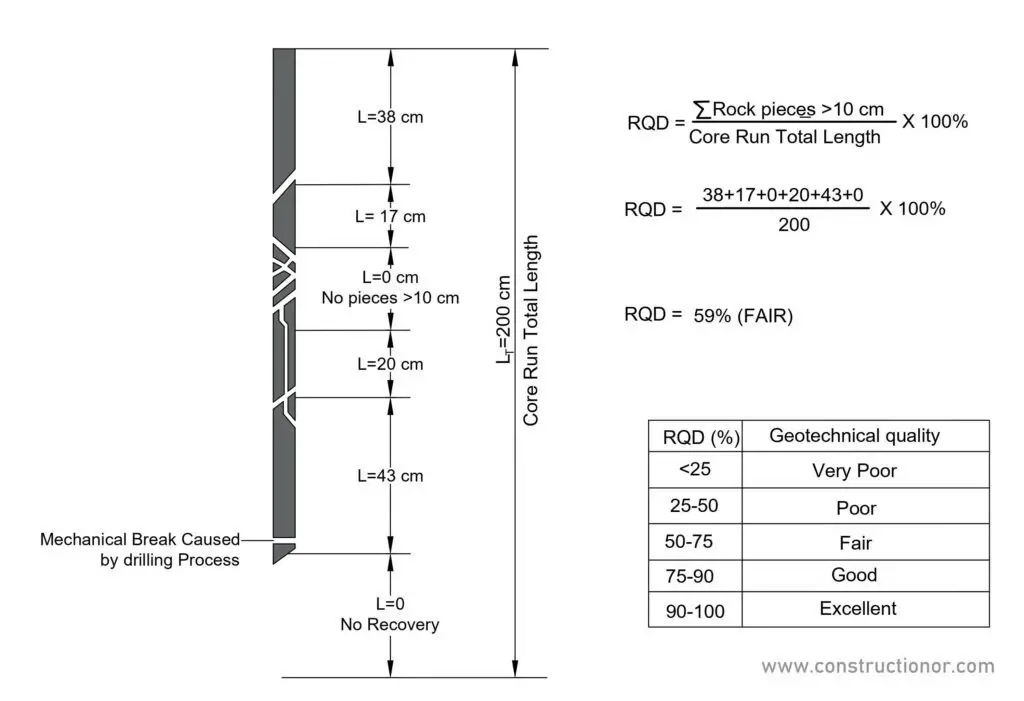



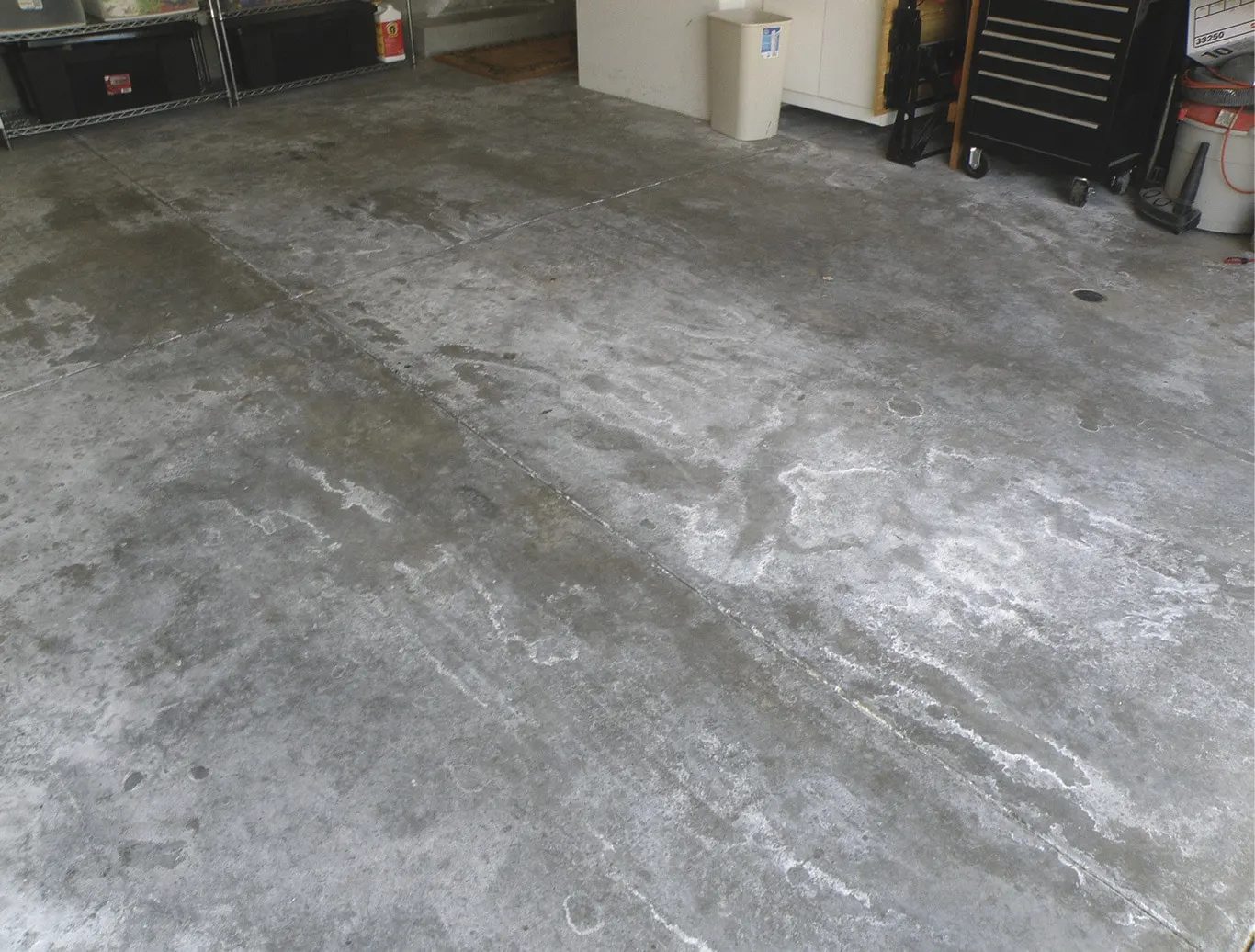
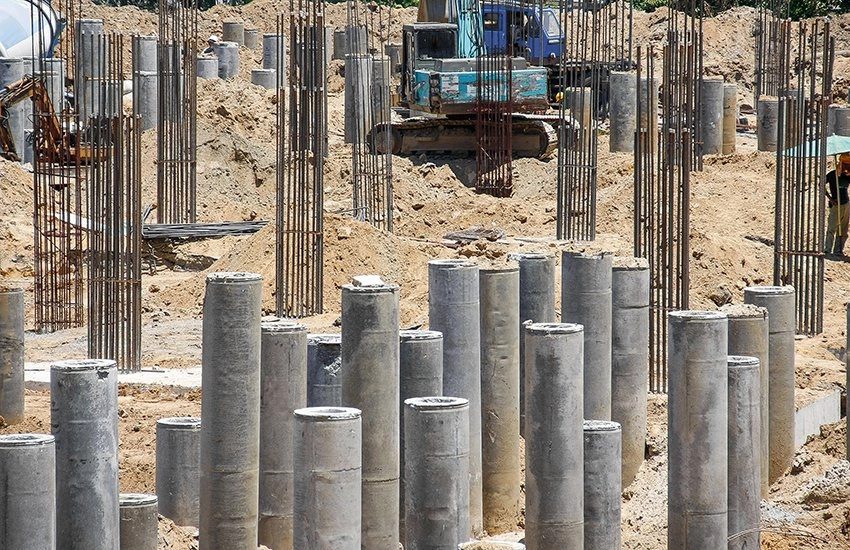

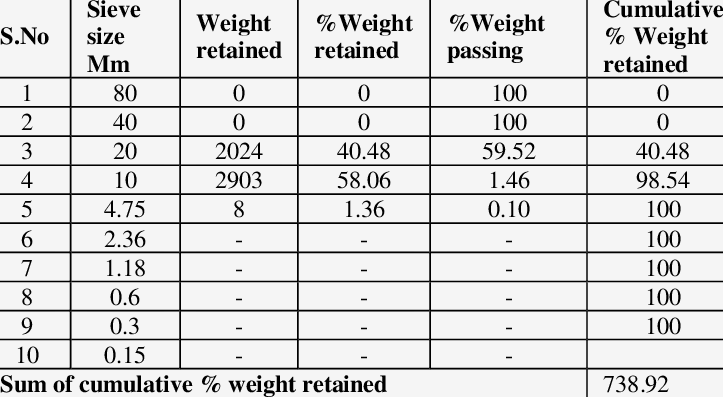

detailed information related to the caisson foundation!
keep it up..
thankyou.
helpful..
Thankyou.
Wonderful